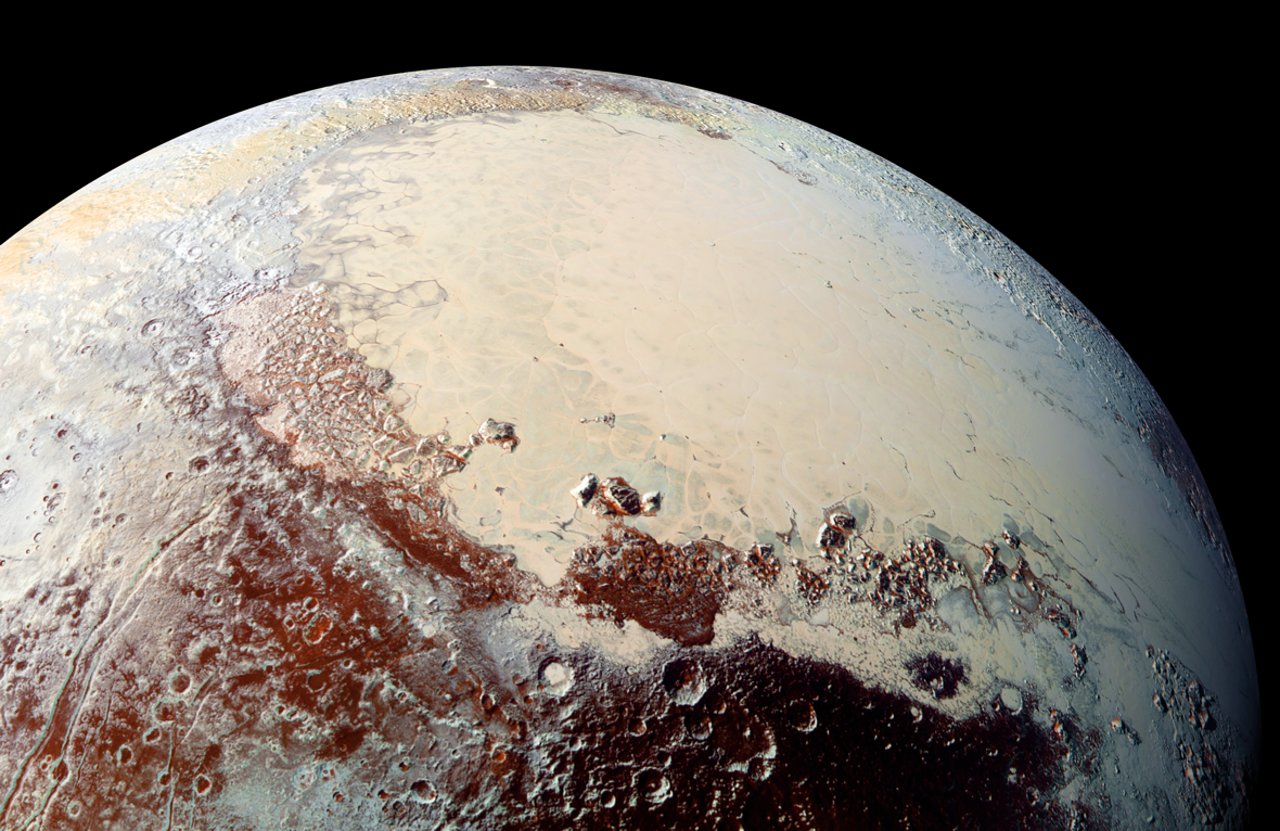Happy Anniversary, New Horizons! Probe Flew by Pluto 2 Years Ago Today

It's hard to believe that it's already been two years.
On July 14, 2015, NASA's New Horizons spacecraft zoomed within 7,800 miles (12,550 kilometers) of Pluto, capturing the first-ever up-close looks at the dwarf planet system.
Since its 1930 discovery, Pluto had remained but a blur of pixels in even the best imagery, so the flyby was a revelation. New Horizons' photos revealed Pluto to be a diverse world with a stunning variety of features, including a 620-mile-wide (1,000 km) plain of nitrogen ice and water-ice mountains that rise 2 miles (3.2 km) into the dwarf planet's exotic sky. [Pluto Flyby Anniversary: New Horizons' Most Amazing Photos]
"I think the most surprising thing is how complex that little planet is," New Horizons principal investigator Alan Stern, of the Southwest Research Institute in Boulder, Colorado, told Space.com via email.
"It outstripped everyone’s expectations, and I am certain that we’re going to need an orbiter follow-up to make sense of Pluto," Stern added. "Fortunately, now we know how to do that and what new instruments to bring to bear."
The flyby also revealed, among many other things, that Pluto is slightly larger than scientists had thought; that its many-layered atmosphere is blue; that an ocean of liquid water might slosh beneath the dwarf planet's surface; and that all five of its moons are the same age (and therefore were probably all formed by a colossal impact between Pluto and another object billions of years ago).
Future generations will likely look back on the $700 million New Horizons mission, which launched in January 2006, as a groundbreaking example of cost-effective space exploration, Stern said. [New Horizons' Pluto Flyby: Complete Coverage]
Breaking space news, the latest updates on rocket launches, skywatching events and more!
"New Horizons will best be known, I think, for showing how to do outer planet exploration less expensively and for delivering spectacular science to boot," he said. "But I’d be remiss if I didn’t add that it’ll also be known for completing the first era of planetary reconnaissance by finally revealing Pluto, the last of the planets known at the dawn of the space age."
Indeed, the other eight originally recognized planets had already gotten an up-close visit by the time of New Horizons' Pluto flyby. The most recent such unveiling came back in August 1989, when NASA's Voyager 2 spacecraft cruised past Neptune. (Of course, the International Astronomical Union reclassified Pluto as a dwarf planet in 2006, reducing the number of "officially recognized" planets in our solar system to eight — a decision that remains controversial to this day.)
Speaking of legacies is a bit premature, however, for New Horizons' work isn't done. The probe is now embarked on an extended mission that's centered on a second flyby, which will take place on Jan. 1, 2019. On that date, New Horizons will zoom close to a small object called 2014 MU69, which lies about 1 billion miles (1.6 billion kilometers) beyond Pluto.
Follow Mike Wall on Twitter @michaeldwall and Google+. Follow us @Spacedotcom, Facebook or Google+. Originally published on Space.com.

Michael Wall is a Senior Space Writer with Space.com and joined the team in 2010. He primarily covers exoplanets, spaceflight and military space, but has been known to dabble in the space art beat. His book about the search for alien life, "Out There," was published on Nov. 13, 2018. Before becoming a science writer, Michael worked as a herpetologist and wildlife biologist. He has a Ph.D. in evolutionary biology from the University of Sydney, Australia, a bachelor's degree from the University of Arizona, and a graduate certificate in science writing from the University of California, Santa Cruz. To find out what his latest project is, you can follow Michael on Twitter.
